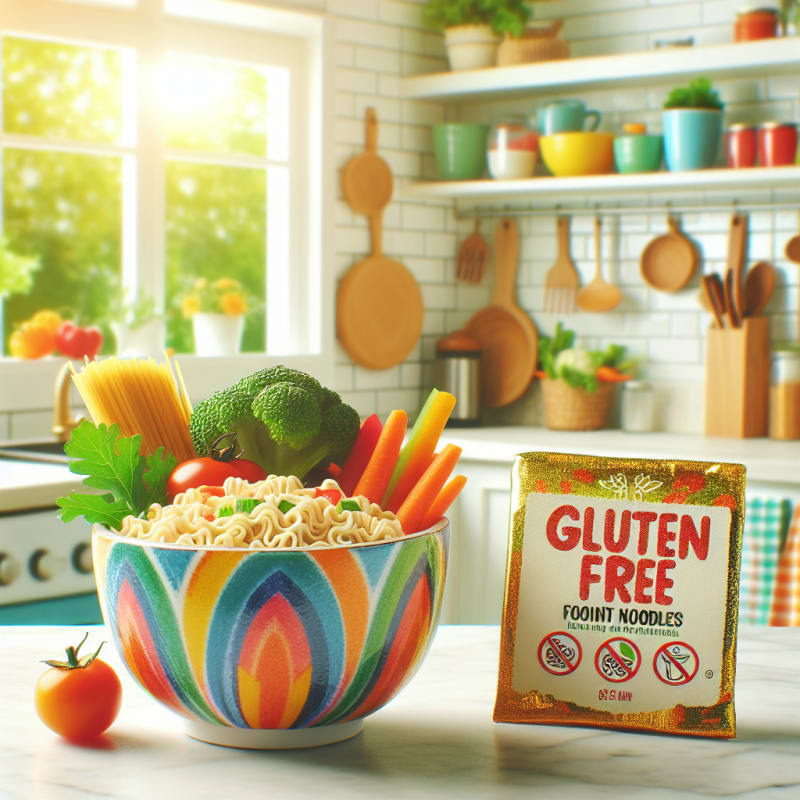Is Maggi Gluten-Free? Ingredient Analysis, Regulations, and Smart Shopping
Category: Gluten-Free
For millions of consumers worldwide, understanding food ingredients is not just a matter of preference—it is a necessity. Whether due to celiac disease, gluten sensitivity, or a commitment to a gluten-free lifestyle, the question “is Maggi gluten-free?” arises frequently. This comprehensive guide explores Maggi’s ingredients, regulatory standards, and digital tools that empower smarter, safer food choices.
What Is Maggi? A Global Food Brand Under the Microscope
Maggi, owned by Nestlé, is a household name for instant noodles, seasonings, and sauces. Its products are ubiquitous in supermarkets from New York to Berlin. But as dietary awareness grows, so does scrutiny of ingredient lists—especially concerning gluten, a protein found in wheat, barley, and rye. According to the U.S. Food and Drug Administration (FDA), gluten-free labeling is strictly regulated, but global brands like Maggi may vary their formulations and labels by region.
Is Maggi Gluten-Free? Ingredient Analysis by Product Type
1. Maggi Instant Noodles
| Product | Main Ingredients | Gluten Status |
|---|---|---|
| Maggi 2-Minute Noodles (US) | Wheat flour, edible vegetable oil, salt, seasoning | Contains gluten |
| Maggi 2-Minute Noodles (EU) | Wheat flour, vegetable fat, salt, flavor enhancer | Contains gluten |
| Maggi Rice Noodles (Select Markets) | Rice flour, tapioca starch, salt, seasoning | Gluten-free (check label) |
Most classic Maggi noodles contain wheat flour, making them not gluten-free. However, Maggi offers rice-based and gluten-free alternatives in select markets. Always check the packaging for a certified gluten-free label, as required by the FDA in the U.S. and EFSA in the EU.
2. Maggi Seasonings and Sauces
- Maggi Liquid Seasoning: Often contains wheat-derived ingredients. Not gluten-free unless specifically labeled.
- Maggi Bouillon Cubes: Ingredients may vary by country; some contain wheat starch.
- Maggi Gluten-Free Options: In some regions, Maggi offers gluten-free sauces and cubes. Look for “gluten-free” certification.
The European Food Safety Authority (EFSA) mandates clear allergen labeling, but ingredient lists can change. Always verify before purchase.
Gluten-Free Labeling Laws: US vs. EU
| Region | Authority | Gluten-Free Standard |
|---|---|---|
| United States | FDA | Less than 20 ppm gluten; must be labeled “gluten-free” |
| European Union | EFSA | Less than 20 ppm gluten; allergen labeling required |
Both the FDA and EFSA set a threshold of 20 parts per million (ppm) for gluten-free labeling. However, enforcement and ingredient transparency may differ. For instance, a Maggi product labeled gluten-free in Germany may not be identical to its U.S. counterpart. Always check local packaging and consult official resources.
Scientific Evidence: Gluten Sensitivity and Celiac Disease
- Celiac Disease: An autoimmune condition triggered by gluten ingestion. Even trace amounts can cause harm (PubMed).
- Gluten Sensitivity: Non-celiac gluten sensitivity affects millions, causing digestive and neurological symptoms (NCBI).
- Labeling Importance: Accurate labeling is essential for consumer safety (FDA).
Scientific consensus underscores the need for vigilance. Mislabeling or cross-contamination can have serious health consequences.
Recent News: Maggi and Gluten-Free Trends
- The New York Times reports on Maggi’s global reformulation efforts to meet dietary needs.
- FoodNavigator covers the launch of gluten-free Maggi noodles in select European markets.
- Forbes discusses the importance of labeling innovation for consumer trust.
These articles highlight the evolving landscape of gluten-free products and the importance of transparent labeling.
How Food Scan Genius Helps Gluten-Free Shoppers
Identifying gluten in packaged foods can be daunting. The Food Scan Genius app (scangeni.us) empowers users to scan barcodes and instantly detect gluten and other allergens. Its database covers thousands of products, including Maggi’s regional variants.
- Scan Maggi products to check for gluten and other allergens
- See ingredient breakdowns by country
- Get alerts for cross-contamination risks
- Find certified gluten-free alternatives
“Food Scan Genius saved me from accidental gluten exposure. I scanned Maggi noodles in the store and learned they weren’t safe for my celiac diet. Now I never shop without it!”
— Emily R., Boston
Download Food Scan Genius today and shop with confidence: scangeni.us
Q&A: Is Maggi Gluten-Free? Featured Snippet Support
Q: Are classic Maggi noodles gluten-free?
A: No. Most classic Maggi noodles contain wheat flour and are not gluten-free.
Q: Does Maggi offer gluten-free products?
A: Yes, in select regions. Look for rice noodles or products labeled “gluten-free.”
Q: How can I check if a Maggi product is gluten-free?
A: Read the ingredient list and look for official gluten-free certification. Use Food Scan Genius for instant verification.
Q: Do labeling laws differ by country?
A: Yes. The FDA in the U.S. and EFSA in Europe have similar standards but enforcement and product formulations may vary.
Conclusion: Making Informed Choices About Maggi and Gluten
In a globalized food market, ingredient transparency is paramount. Maggi’s classic products are not gluten-free, but alternatives exist for those who need them. Understanding labeling laws, consulting scientific evidence, and leveraging digital tools like Food Scan Genius can resolve uncertainty and safeguard health.
Next time you shop, scan, or cook, remember: informed choices begin with knowledge—and the right technology. Download Food Scan Genius and take control of your gluten-free journey.
References
FAQ
- Is Maggi gluten-free? Most Maggi products are not gluten-free due to wheat ingredients. Check for certified gluten-free options.
- Can I eat Maggi if I have celiac disease? No, unless the product is labeled gluten-free and certified safe.
- How do I verify gluten-free status? Read labels, consult official resources, and use Food Scan Genius.
- Do Maggi ingredients differ by country? Yes. Always check local packaging and regulations.





